Sat Evidence Based Reading And Writing
Makers of the new SAT have decided that the Reading and Writing sections go together like peanut butter and jelly. Instead of treating them separately, College Board now takes Reading and Writing together to give you one Evidence-based Reading and Writing score. This guide will go over exactly how these two sections merge and how this new format affects your test prep. To begin, let's define this new category on the SAT. Ah, the million dollar question! Evidence-based Reading and Writing, which we can abbreviate as EBRW, refers to both the Reading and Writing sections of the SAT together. "But these two sections are separate!" you might have just declared at your computer screen. You wouldn't be wrong, and I applaud your passion for SAT accuracy. When you take the test, you do take these two sections individually. When you get your scores back, though, you'll just get one EBRW score between 200 and 800. The other half of your total score will be your math score, which will also fall somewhere between 200 and 800. Add your EBRW score and math score together, and you'll get a total score somewhere between 400 and 1600. On the old SAT, Reading and Writing were scored separately, resulting in a maximum possible score of 2400. In those days, the verbal sections (technically called Critical Reading and Writing) made up two-thirds of your total score, while math only made up one-third. Not the ideal make-up for students who were stronger in math, but English-oriented kids were sitting pretty. Now, half your score is verbal, and the other half is math. They're equal! Similarly, your performance on both the Reading and Writing sections factor equally into your combined EBRW score, even though the Reading section's almost twice as long as the Writing section. To give you a clear view into where your EBRW score actually comes from, I'll go over the process in the steps below. On the SAT, you'll first take the 65-minute Reading section. Then you'll move onto the 35-minute Writing and Language section. Even though Writing's a lot shorter than Reading, it counts equally toward your combined Reading and Writing score. If you've scored any of your own practice tests, then you may be familiar with the scoring process. First, you add up your raw score in each section, giving yourself one point for every right answer and zero points for wrong or skipped answers. Then you use the provided conversion chart to convert both raw scores into scaled scores between 10 and 40. The exact conversion might differ slightly based on how students perform on a given administration, but here's a representative sample chart: After you convert your raw scores to a scale of 10 to 40, then you simply add them together and multiply by 10. That equation will get you your final EBRW score between 200 and 800. For Example: Let's say you got a raw score of 31 in Reading and 28 in Writing and Language. Your Reading score gets scaled to a 30 and your Writing and Language score gets scaled to a 28. Add them together and multiply by 10: 30 + 28 = 58 x 10 = 580 Your final EBRW score's a 580. Similarly, you can see how to perfect scaled scores get you an 800. A perfect scaled score of 40 in Reading + 40 in Writing = 80. Multiply by 10 and you get 800. Even though the two sections are scored together, they're still presented as separate sections on the SAT. At the same time, they feature some overlap in content and skills beyond a strong grasp of the English language. To give you a sense of their similarities and differences, let's explore the content of both sections, starting with Reading. Gather round! It's reading hour. SAT Reading is always your first section on the SAT. It tests your reading comprehension skills by asking you to read passages and one or more graphics and to answer questions about them. Below you'll find an overview of the Reading section's format and question types. All of the questions in the Reading section are multiple choice with four possible answer choices, A, B, C, and D. This section contains five passages, or technically six, since "one" is a set of paired passages. One of these passages come from World Literature, two come from History or Social Studies, and two come from Science. One or more passages will be accompanied by a graphic, like a chart, table, or graph. The Reading section tests your skills to comprehend passages from various genres. It wants you to examine both big picture ideas and little picture details, as well as to manage your time efficiently. Since you just get one big block of time in this 65-minute section, it's your job to divide it roughly equally among the five passages. Some elements that the Reading section asks about are main idea, important details, and vocabulary in context. By analyzing the text, we've actually picked out eight main types of Reading questions. They are big picture/main idea, little picture/detail, inference, vocabulary in context, function, author technique, evidence support, and data interpretation. For a detailed breakdown of each question type, along with sample questions of each, check out our full guide to the SAT Reading section! For now, let's take a look at the structure and content of Writing and Language. The Writing section's like the Reading section, except the passages are all messed up. You get to fix them! SAT Writing and Language asks you to be an editor. You'll read passages that have errors of grammar and punctuation, as well as unclear organization. Then you'll identify the errors and provide suggestions for how to fix them. Before getting into the question types, consider this section's overall format below. SAT Writing Format All 44 of the Writing questions are multiple choice and based on passages. You'll get four passages, each followed by 11 questions. These passages will come from four distinct areas: Careers, Social Studies, Humanities, and Science. Like in the Reading section, one or more of these passages (often the Science one) will be accompanied by a graphic, like a scatterplot, bar graph, or chart. As you read above, Writing and Language questions ask you to edit and revise words, sentences, and paragraphs. You might replace a word, fix a mistake in grammar or punctuation, rearrange sentences, or even add or delete details to improve organization and clarity. College Board categorizes 24 questions as Command of Evidence, Words in Context, and Expression of Ideas. These questions ask about how ideas develop or get supported, the proper use of vocabulary, and organization. The remaining 20 questions ask about Standard English Conventions. These include questions about sentence structure, usage, and punctuation. These questions tend to get down to the nitty-gritty of sentence mechanics and little details like comma and apostrophe use. You can find a full breakdown of the skills tested in Writing and Language in this comprehensive guide. As you can see, Reading and Writing both test your verbal skills, but they do so in distinct ways. So does the fact that they're now combined into one score affect your prep at all? Reading and Writing have distinct differences, but these next five study tips focus on where they overlap. Reading and Writing require their own approaches to prep, but they have enough of an overlap that some of your prep will help in both sections. The five tips below focus on the ways that Reading and Writing intersect. Read on for five essential pieces of advice that will help you get ready for both Reading and Writing at the same time - and thereby boost your EBRW score! If you look at the way College Board describes its question types, it uses the category, "Command of Evidence," for both Reading and Writing questions. For both sections, you need to base your answers on evidence from the text. This "eye for evidence" is a key skill in both sections. However, Reading and Writing evidence-based questions look a little different. The Reading section has explicit evidence-based questions that ask you about your reason for an answer to a previous question. Here's one example of a Reading Command of Evidence question. The Writing section tests your Command of Evidence slightly differently. It typically asks whether you should make a specific revision to a passage and why, like in the following sample question: While Reading and Writing have their differences, they both call for a strong command of evidence. To improve your EBRW score a whole, you should hone this skill. Make sure you practice close reading and base your answers entirely on the text. Don't get distracted by previous knowledge of a topic. You should be able to back up all of your answers with evidence directly from the passage if asked. As you can see from the above sample questions, you very well may be asked to do just that! Another similarity between Reading and Writing is that they both ask about words in context. As all of the questions are passage-based in both sections, all of the vocabulary questions require you to understand how a word is being used in context. Here's a typical example of a vocabulary questions in the Reading section. It refers to a passage from SAT Practice Test 3. In Writing, you'll get the passage alongside the questions so you can refer right back to a specific word or line. In the example below, #25 asks if the vocabulary word being used is the correct one. To prepare for these questions in both sections, you should make sure you understand how the meanings of words shift depending on their contexts. The words might not be especially advanced, but they often are ones that can have multiple meanings. Focus on these kinds of mid-level, multiple meaning words as you study for EBRW. Take a close look at graphs and charts to boost your EBRW score. As you read above, both sections ask you to interpret data from charts, tables, and/or graphs. These graphs will relate back to a passage. Here are examples ofdata interpretation questions from the Reading section. Since the Writing section features passages with errors, it tends to ask whether the data in a graphic is being accurately represented in its corresponding passage. If the answer's no, it may ask you about the correct way to describe it. To prepare for Evidence-based Reading and Writing, you should practice data interpretation questions. Strengthen your skills at interpreting and describing data in graphs and charts, and keep an eye on the relationship between a passage and its corresponding graphic. Your SAT prep materials should have sample questions for you to use, and you might also practice with data interpretation questions from the Science section of ACT practice tests. You just saw three specific ways that Reading and Writing questions overlap. On a more big picture level, these sections are similar because they test your understanding of the English language. By practicing reading widely and writing often, you can greatly improve your skills. As you saw, both sections select passages from various genres, mainly those that are nonfiction and argument-based. To prepare, therefore, you should practice reading not just prose, but also works from history and science. There are specific methods you can use to break down the structure of an argument or analyze an author's word choice. When you're not taking such an analytical approach, though, you should practice reading and writing as often and possible. Over time, you'll see gradual improvement in your reading comprehension and writing skills. One final tip: remember that your final scores will be half math and half verbal. You can't consider the Reading and Writing sections as unrelated, as your performance on both sections will affect your overall verbal score. Also remember that both sections contribute equally to your EBRW score. If you're scoring consistently strong in Reading, then you might want to put more of your energy toward Writing, or vice versa. Figure out where your strengths and weaknesses lie and what question types you can study to improve your combined score. There are other important strategies you can use to study for each section individually, but these five tips are the most important ones to remember when considering the sections together as Evidence-based Reading and Writing. Ready to go beyond just reading about the SAT? Then you'll love the free five-day trial for our SAT Complete Prep program. Designed and written by PrepScholar SAT experts, our SAT program customizes to your skill level in over 40 subskills so that you can focus your studying on what will get you the biggest score gains. Click on the button below to try it out! In closing, let's review the key points you need to remember about EBRW and your SAT verbal score. If you take anything away from this guide, it should be this: Evidence-based Reading and Writing refers to the Reading section and Writing and Language section together. You'll get one EBRW score between 200 and 800 that makes up half of your total SAT score. Both of these sections require their own approach to prep. Reading asks about reading comprehension, while Writing asks you to be an editor and fix mistakes in grammar, organization, and punctuation. Skills and questions in both sections have some overlap, though. They're all passage-based and emphasize command of evidence, an understanding of words in context, the ability to interpret data, and, of course, your overall English language skills. Finally, as you prep, remember that both Reading and Writing and Language factor equally into your verbal score. They're both equally important sections that together make up half of your total SAT score. Would you like to learn more about the Writing and Language section? Check out this guide for a full overview of the Writing section of the SAT. SAT Reading has changed a lot this year. This guide goes over the five key changes that you need to know. Do you feel like you get what the verbal sections are all about? To learn more about the Math No Calculator, check out this comprehensive guide. Want to improve your SAT score by 160 points?We've written a guide about the top 5 strategies you must be using to have a shot at improving your score. Download it for free now: 
What Is Evidence-Based Reading and Writing?
Where Does Your Evidence-Based Reading and Writing Score Come From?
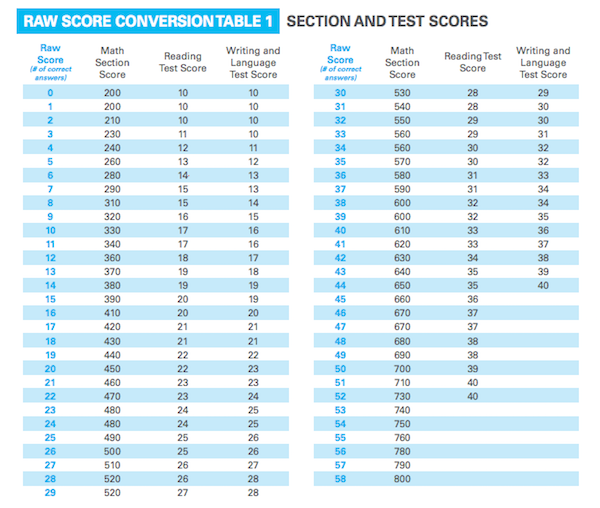

SAT Reading: An Overview
SAT Reading Format
Time Number of Questions Time/question 65 minutes 52 questions 1 minute, 15 seconds SAT Reading Content

SAT Writing and Language: An Overview
Time Number of Questions Time per Question 35 minutes 44 questions 47-48 seconds SAT Writing Content
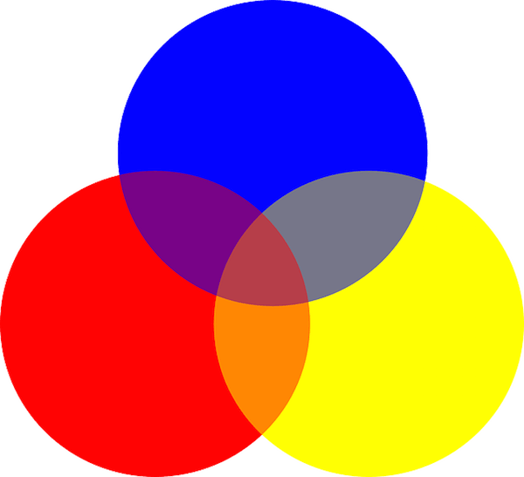
Prepping for Evidence-Based Reading and Writing: 5 Tips
#1: Focus on Command of Evidence
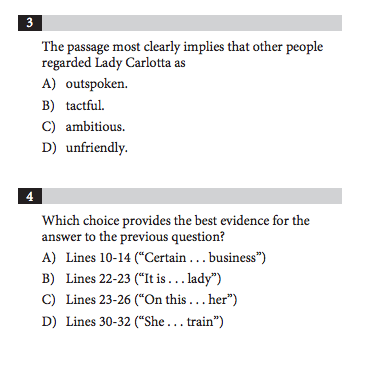
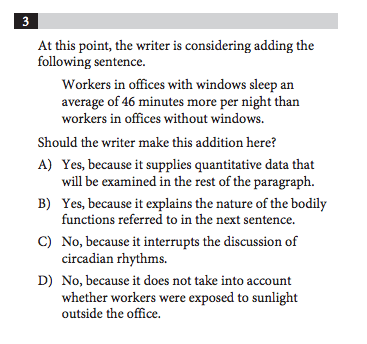
#2: Study Words in Context
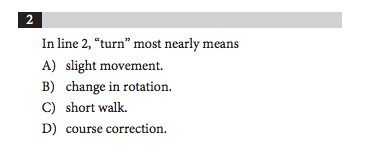
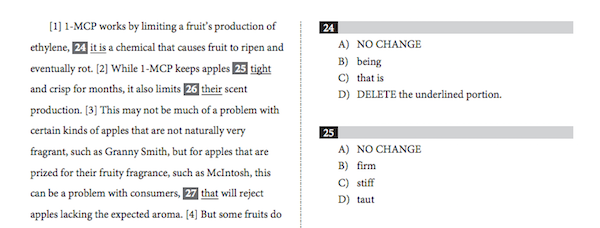

#3: Practice Data Interpretation Questions
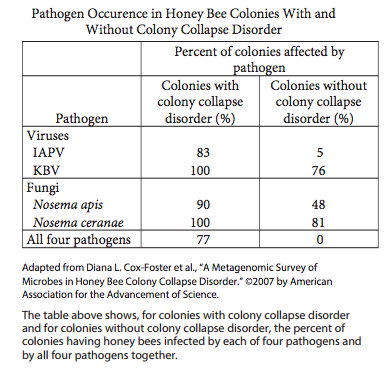
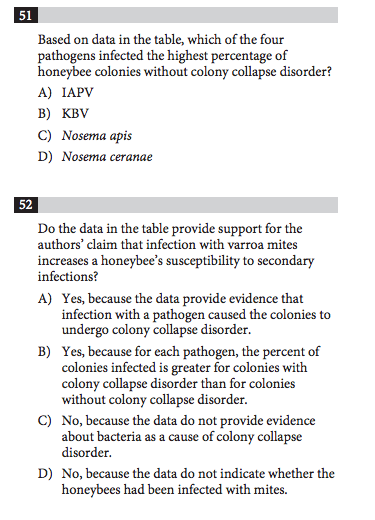
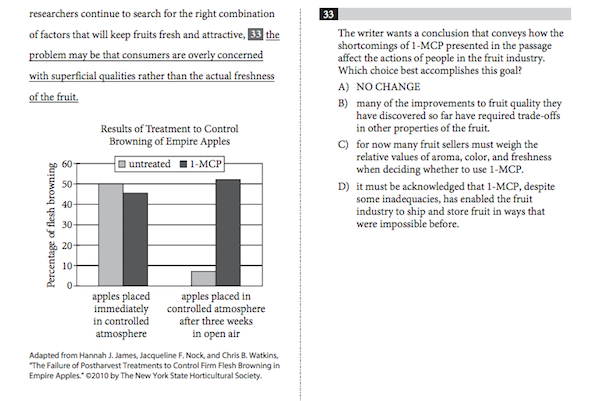
#4: Read and Write Widely
#5: Be Strategic About Your Scores

Evidence-Based Reading and Writing: Final Thoughts
What's Next?


About the Author
Rebecca graduated with her Master's in Adolescent Counseling from the Harvard Graduate School of Education. She has years of teaching and college counseling experience and is passionate about helping students achieve their goals and improve their well-being. She graduated magna cum laude from Tufts University and scored in the 99th percentile on the SAT.
Sat Evidence Based Reading And Writing
Source: https://blog.prepscholar.com/sat-evidence-based-reading-and-writing
Posted by: tristanwirciang.blogspot.com

0 Response to "Sat Evidence Based Reading And Writing"
Post a Comment